Pasta Alla Gricia is a traditional Roman pasta made with simple and high-quality ingredients including guanciale and pecorino romano. Despite the simple ingredients, the cooking method and care put into this classic dish make it incredibly delicious!
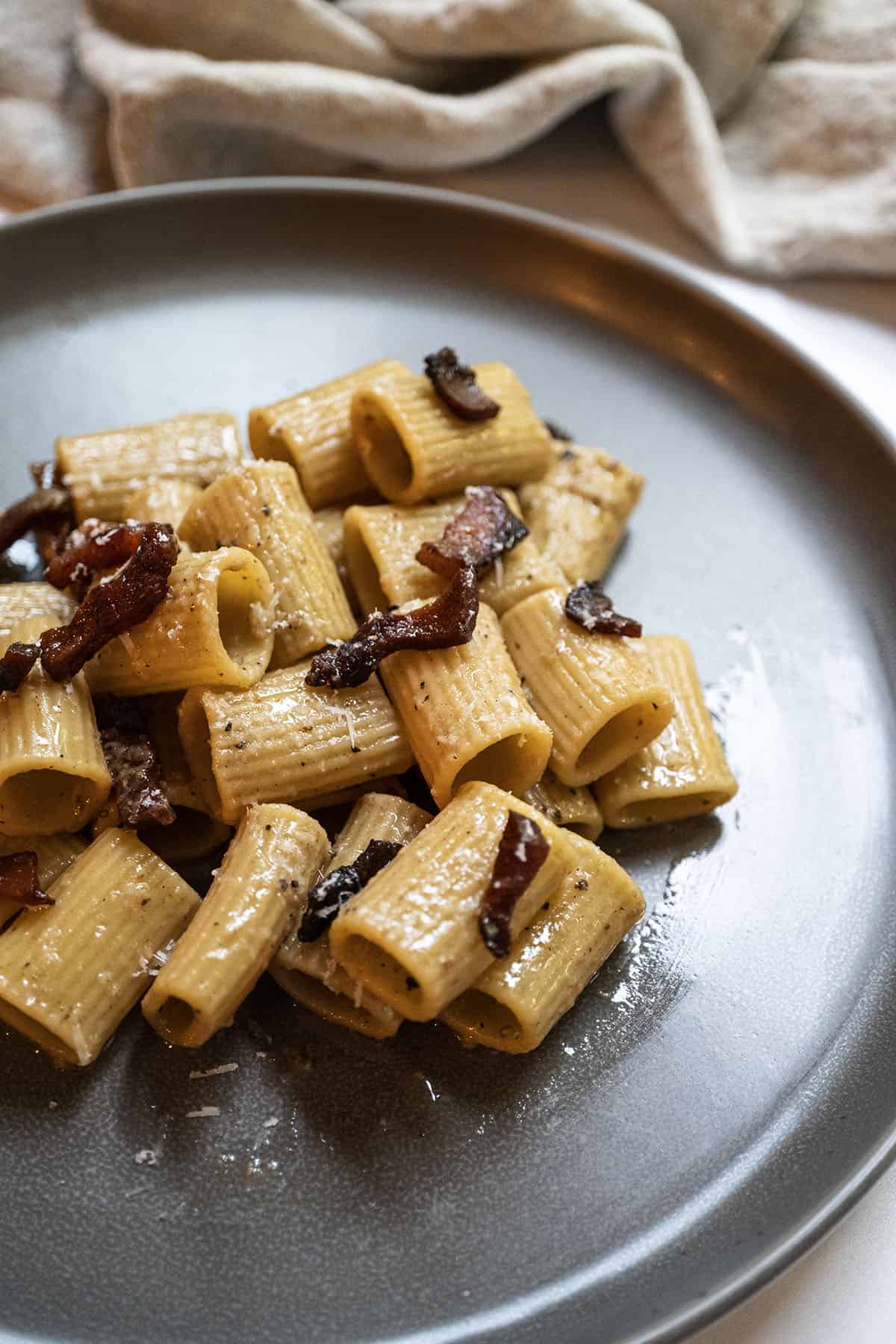
If you're looking for more quick pasta recipes, try our 15-Minute Spaghetti with Garlic and Oil or Pasta with Peas and Pancetta!
Jump to:
The Four Roman Pastas
Pasta alla Gricia is one of the four Roman-style pastas. It's not as well known in America as Spaghetti Carbonara, Bucatini Amatriciana, or Cacio e Pepe, but it is equally delicious. The simple sauce is made from the fat renderings of guanciale and pasta water combined with finely grated pecorino romano.
Amatriciana most likely evolved from pasta alla gricia as the only difference in that dish is the addition of tomatoes. It is a similar dish with a slight kick from the black pepper. One of the keys to a great pasta alla gricia is fresh cracked black pepper.
These classic Italian dishes have a long history in Italy so it's somewhat important to try and keep the ingredients the same. Pasta alla Norma (A Sicilian Dish), although not a Roman dish, is another recipe with a similarly long history in Italy.
Ingredient Notes

Guanciale. Guanciale, or pork jowl is the key flavor in this dish. The rich and delicious fat renderings from guanciale give the sauce flavor and a silky smooth creamy texture. It should be chopped into strips like below to get the perfect combination of fat and meat.
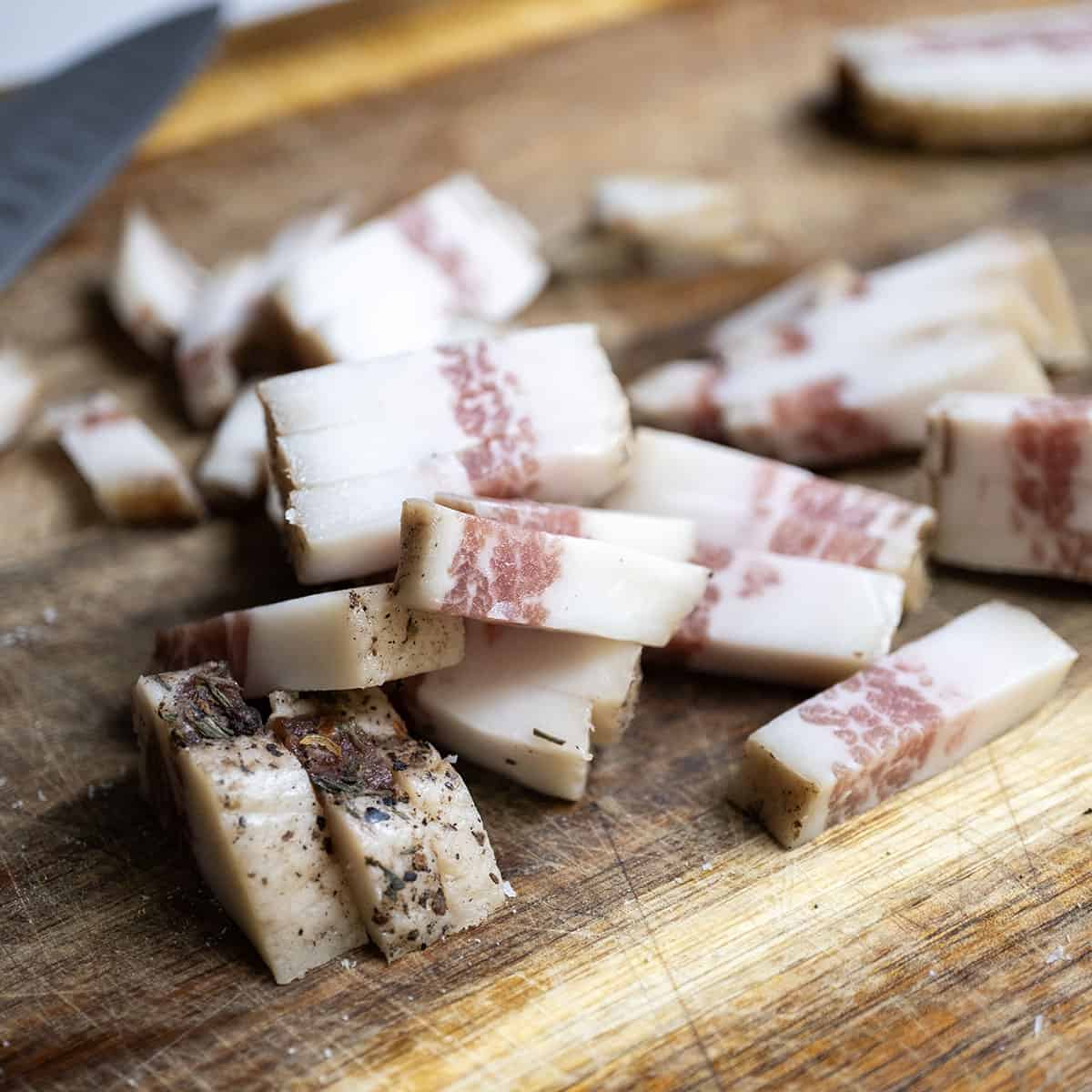
Pecorino Romano. Using real pecorino romano made from sheep milk is important. Freshly grated is key because anything pre-grated will clump up. You want to finely grate the pecorino on a microplane for best results.
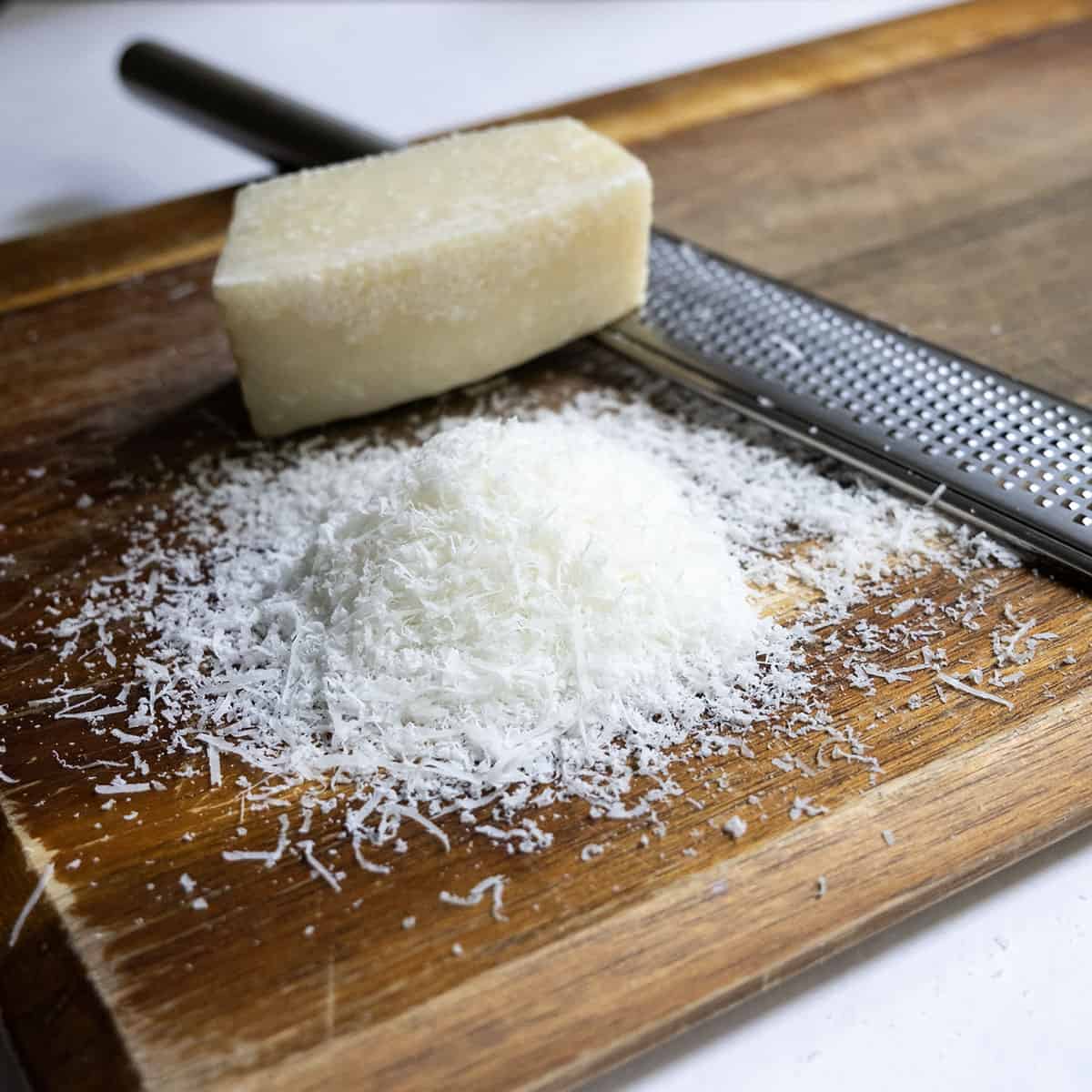
Rigatoni. Try to find a rigatoni that looks like it has flour on the outside of it. You want rigatoni with a lot of starch in it to help build that creamy sauce. Look for one that needs to be cooked for like 15 minutes instead of 10.
Black Pepper. Fresh pepper is key. You won't get the same flavor with a powdered already cracked pepper.
*Please see the recipe card below for more information on the ingredients.
Would you like to save this recipe?
How to Make Pasta Alla Gricia

Step 1: Place the guanciale in a cold pan. Raise the heat to medium. Slowly fry the guanciale until the fat renders and the meat becomes crispy and golden brown. It should take about 8 minutes. Set the guanciale aside and lower the heat to medium-low.
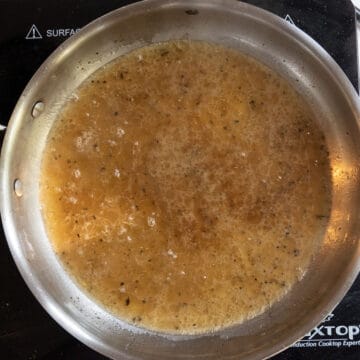
Step 2: While the guanciale is frying, bring a pot of water to a boil and salt it. Add your rigatoni and boil for 1-2 minutes more than half the directed time on the box. Save a cup of the pasta water. Add ½ a cup of pasta water to the pan along with the black pepper.
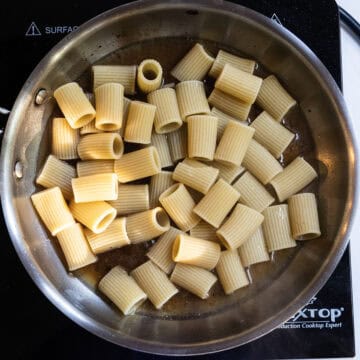
Step 3: Strain the rigatoni and add it to the pan.
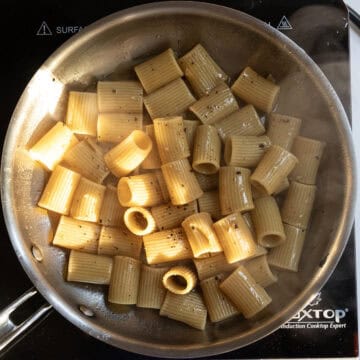
Step 4: Let the pasta simmer in the sauce for about 5 minutes, tossing continuously to emulsify the fat and pasta water.
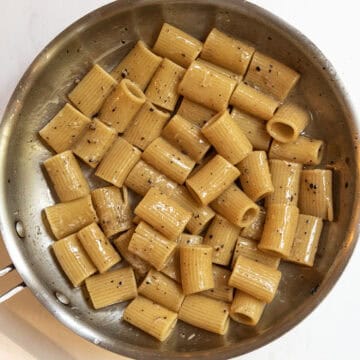
Step 5: Keep tossing until the sauce starts creaming slightly and looks silky.
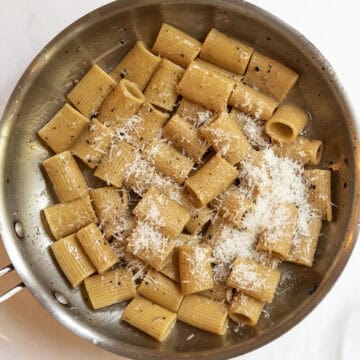
Step 6: Remove the pan from the heat and let it cool for 2 minutes. Add in half of the pecorino and continuously stir or toss the pasta. Add another tablespoon or 2 of pasta water and continue tossing as you slowly add the rest of the pecorino. The sauce should be forming into a slight runny sauce similar to a runny egg.

Step 7: Return the guanciale to the pan and combine. Serve on a plate immediately.
Pasta alla gricia is usually a first dish or Primi, served before the meat. Typically I'll serve it first and then we'll have our meat dish like Restaurant-Style Chicken Francese or Restaurant-Style Chicken Marsala. We'll also serve a vegetable like Sauteed Rapini with Garlic or Garlic Parmesan Green Beans.
Pro-Tips
- Always fry guanciale starting in a cold pan to perfectly render the fat and crisp the meat to a golden brown.
- Emulsifying the sauce is an important step when you're tossing the pasta. Once you add the pasta to the fat and water, continue tossing or stirring for 5 minutes or until the sauce starts to become creamy. Emulsification is how the sauce is created similar to how a Traditional Caesar Dressing is made.
- Finely grated fresh pecorino is the way to go because the cheese won't clump up in the sauce. Just make sure you remove the pan from the heat before adding the pecorino.
Recipe FAQs
Pasta alla gricia is a combination of guanciale renderings and pasta water emulsified and combined with pecorino romano and black pepper for a light and creamy pasta sauce.
Short answer is not well. Because its an emulsified sauce, it should be eaten immediately. Storing cold and then reheating will allow the fat and water to separate.
It's simply the egg. The main difference is carbonara uses an egg yolk for a creamier pasta sauce while gricia relies solely on the fat renderings and pasta water to emulsify.
Cacio e pepe has no meat while pasta alla gricia uses guanciale. Cacio e pepe also uses way more cheese for a rich creamy sauce while gricia relies mostly on the emulsification of fat renderings from the guanciale.
More Pasta Recipes
Please leave a comment and star rating below in the recipe card! I love to hear what you think of our recipes. Feel free to tag us on Instagram @vindelgiudice.

Pasta alla Gricia
Equipment
- 1 large saucepan
- 1 large pot
Ingredients
- ½ lb Rigatoni
- 1 cup pecorino romano, finely grated
- 2 teaspoon black pepper
- 4 oz guanciale
Instructions
- Chop the guanciale and place it in the saucepan. Raise the heat to medium. Slowly fry the guanciale until the fat renders and the meat becomes crispy and golden brown. It should take about 8 minutes. Set the guanciale aside and lower the heat to medium-low.
- While the guanciale is frying, bring a pot of water to a boil and salt it. Add your rigatoni and boil for 1-2 minutes more than half the directed time on the box. Save a cup of the pasta water.
- Add the pepper to the oil in the pan and then add ½ cup of pasta water. Strain the rigatoni and add them to the saucepan. Let the pasta simmer in the sauce for about 5 minutes, tossing continuously to emulsify the fat and pasta water.
- Remove the pan from the heat and let it cool for 2 minutes. Add in half of the pecorino and continuously stir or toss the pasta. Add another tablespoon or 2 of pasta water and continue tossing as you slowly add the rest of the pecorino. The sauce should be forming into a slight runny sauce similar to a runny egg.
- Remove the pasta from the pan and serve.
Notes
- Always fry guanciale starting in a cold pan to perfectly render the fat and crisp the meat to a golden brown.
- Emulsifying the sauce is an important step when you're tossing the pasta. Once you add the pasta to the fat and water, continue tossing or stirring for 5 minutes or until the sauce starts to become creamy.
- Finely grated fresh pecorino is the way to go because the cheese won't clump up in the sauce. Just make sure you remove the pan from the heat before adding the pecorino.


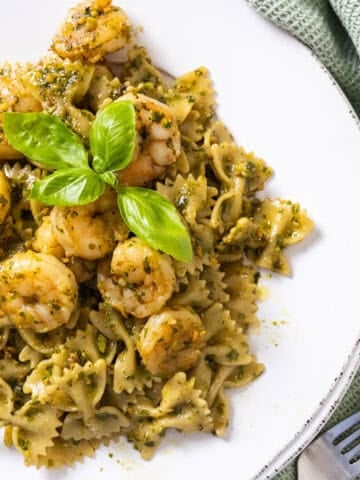
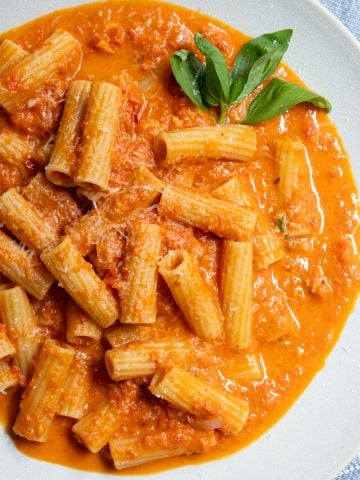


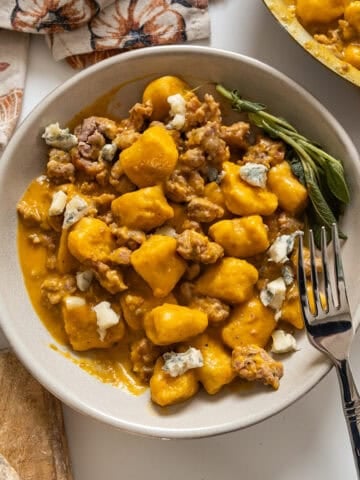

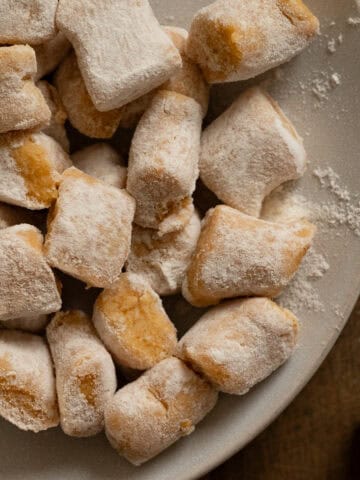

Vincent DelGiudice says
This is one of my favorite classic Italian Recipes. It's a go to late night snack when I have some guanciale.